Ubud Palace, also known as Puri Saren Agung Ubud, is a historical and cultural landmark located in the heart of Ubud, Bali, Indonesia. It serves as the official residence of the royal family of Ubud and holds significant historical and architectural value. The palace is an exquisite example of traditional Balinese architecture, characterized by intricate carvings, ornate gates, and well-preserved Balinese artwork. Besides being the residence of the royal family, Ubud Palace also functions as a cultural center where traditional dance performances and ceremonies take place, offering visitors a glimpse into the rich cultural heritage of Bali.
Ubud Palace is not just a residence; it also serves as a cultural center and a venue for various traditional dance performances and ceremonies. The palace hosts nightly dance performances that showcase various Balinese dance forms, including the famous Legong and Barong dances, providing visitors with a glimpse into the rich cultural heritage of Bali.
The palace grounds feature serene gardens and courtyards that add to the overall ambiance of the place. Visitors to Ubud Palace can explore the palace grounds, witness the traditional dance performances, and immerse themselves in the cultural experiences offered by this historical site.
Ubud Palace is a must-visit destination for those interested in Balinese culture and history. Its significance as the royal residence, its traditional dance performances, and its beautiful architecture make it a popular attraction in the heart of Ubud, attracting both tourists and locals seeking a deeper connection with Balinese traditions and customs.
The architecture of Ubud Palace, also known as Puri Saren Agung Ubud, is a beautiful representation of traditional Balinese architecture and royal aesthetics. The palace’s design and layout reflect the cultural heritage and historical significance of the Ubud royal family. Here are some key features of the architecture found in Ubud Palace:
1. Balinese Architecture: Ubud Palace showcases the classic elements of Balinese architecture, which emphasize harmony with nature and the surrounding environment. The buildings are constructed using natural materials such as wood, stone, and thatch, blending seamlessly with the lush greenery of Ubud’s landscape.
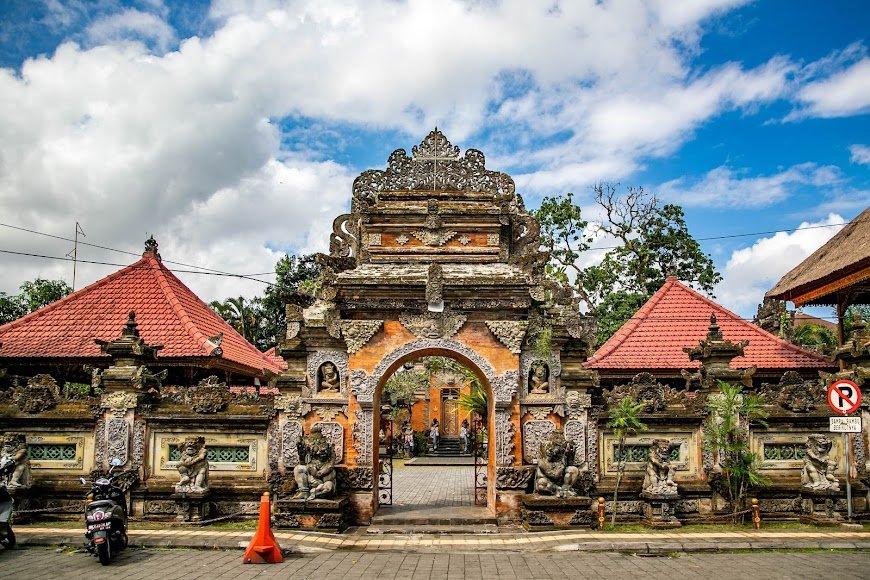
2. Pavilions and Courtyards: The palace complex is composed of several pavilions and courtyards, each serving specific functions and purposes. These structures are interconnected through open spaces and intricate pathways, creating a sense of unity and tranquility within the palace grounds.
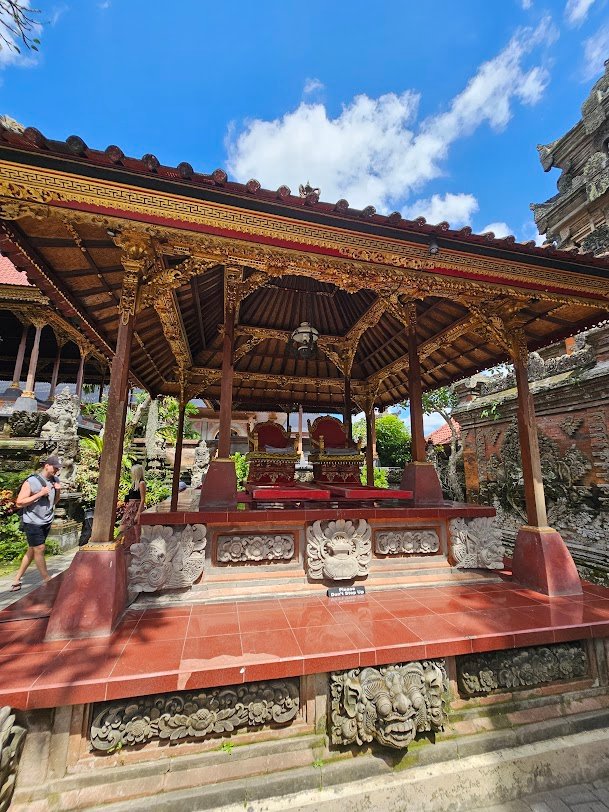
3. Gates and Gateways: The entrances to the palace are adorned with elaborately carved gates and gateways, showcasing fine craftsmanship and traditional Balinese motifs. These gateways serve as symbolic markers and represent the transition from the outer world to the sacred space within the palace.
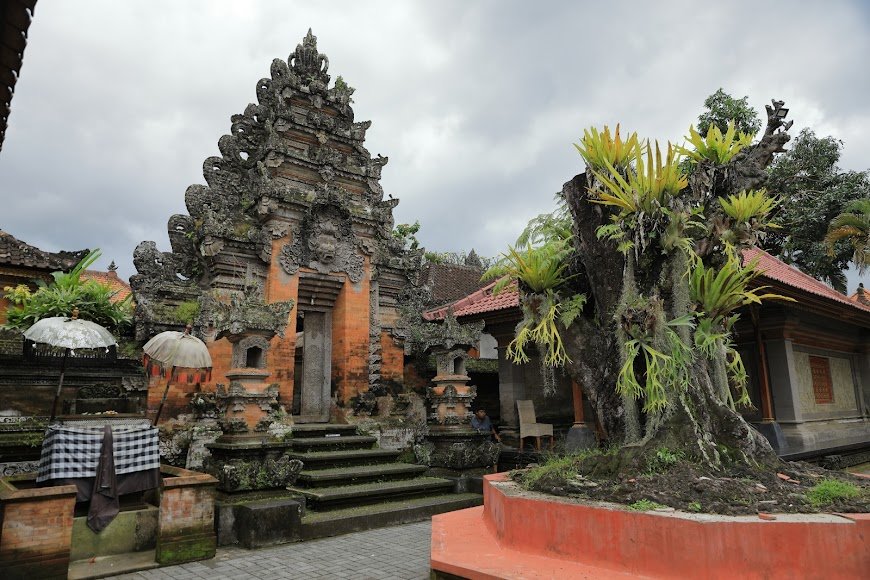
4. Carvings and Ornamentation: The palace is adorned with intricate carvings and ornamentation that depict various scenes from Hindu epics, folklore, and mythological stories. The carvings often feature mythical creatures, celestial beings, and floral patterns, adding a touch of artistic splendor to the architecture.
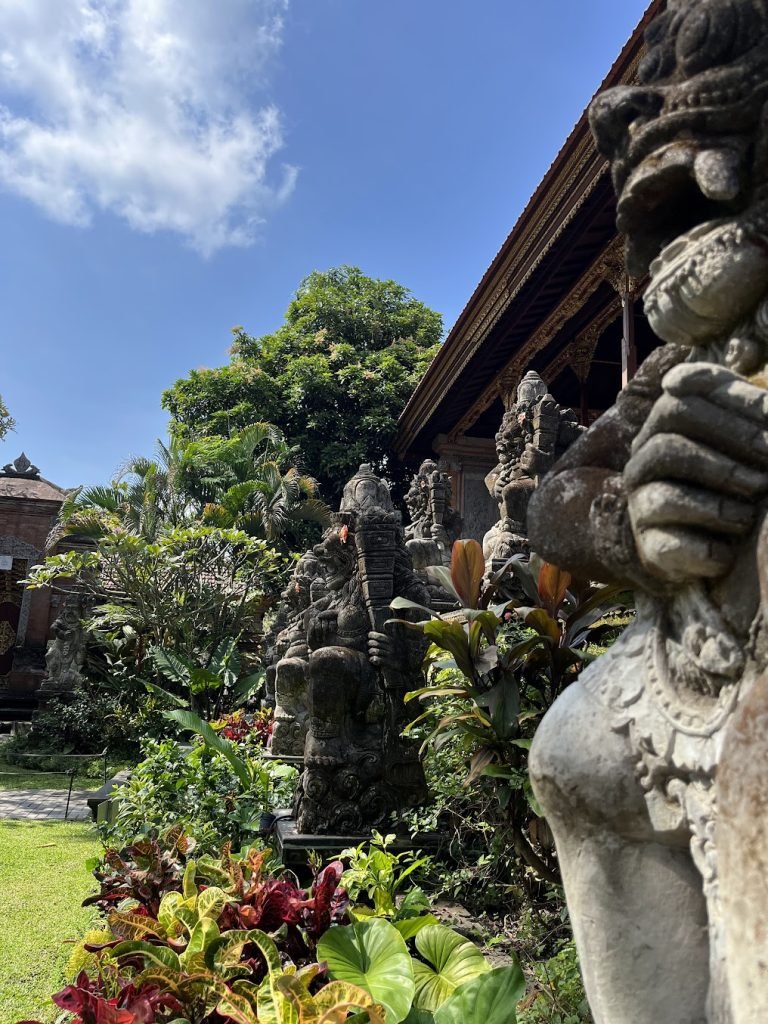
7. Bale Bengong (Gazebos):Ubud Palace includes bale bengong, traditional Balinese gazebos or resting pavilions, scattered throughout the complex. These pavilions offer a peaceful place for relaxation, meditation, and enjoying the beauty of the surrounding gardens.
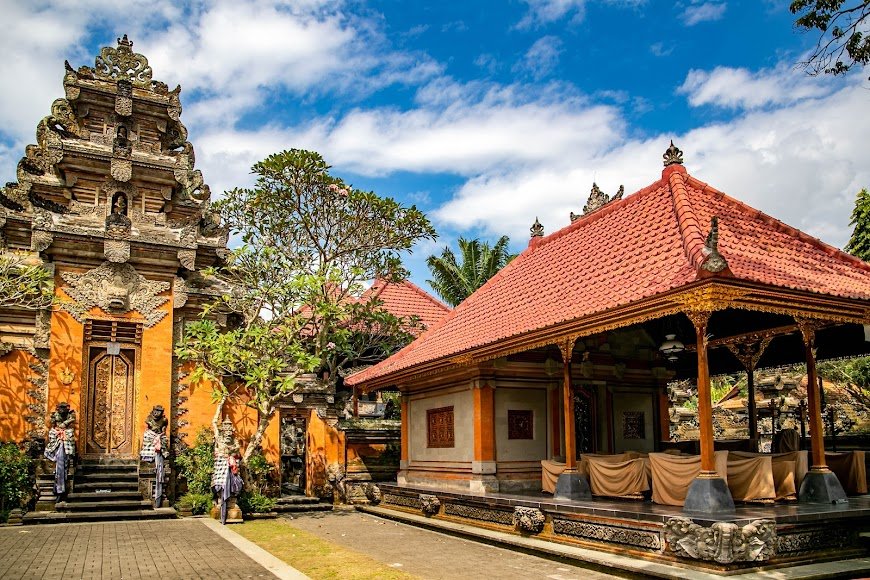
8. Cultural Elements: The architecture of Ubud Palace is infused with cultural elements and symbols that hold significant meaning in Balinese traditions. The buildings are oriented according to spiritual principles, and specific spaces are reserved for sacred rituals and ceremonies.
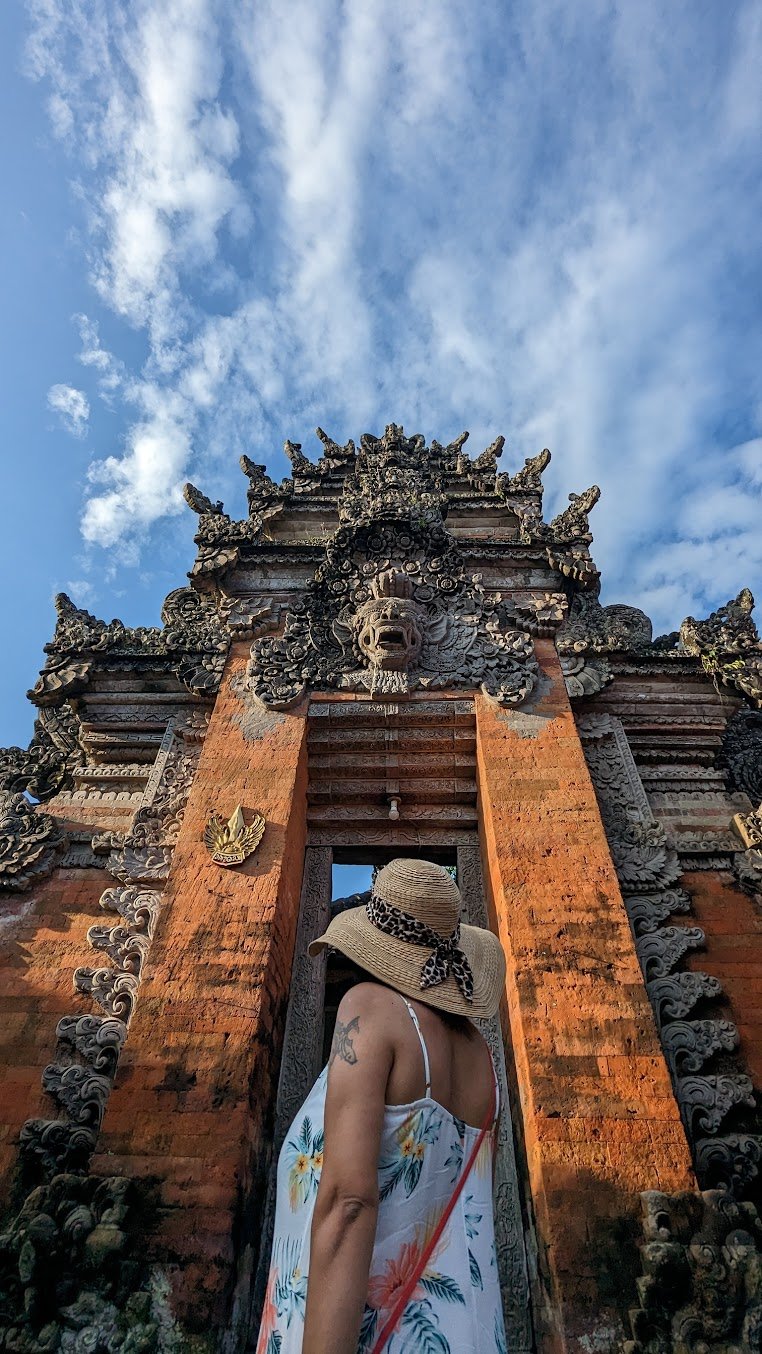
9. Well-Preserved Artwork: The palace’s architecture features well-preserved Balinese artwork, including paintings, sculptures, and textiles. These art forms showcase the richness of Balinese culture and demonstrate the importance of art in Balinese society.
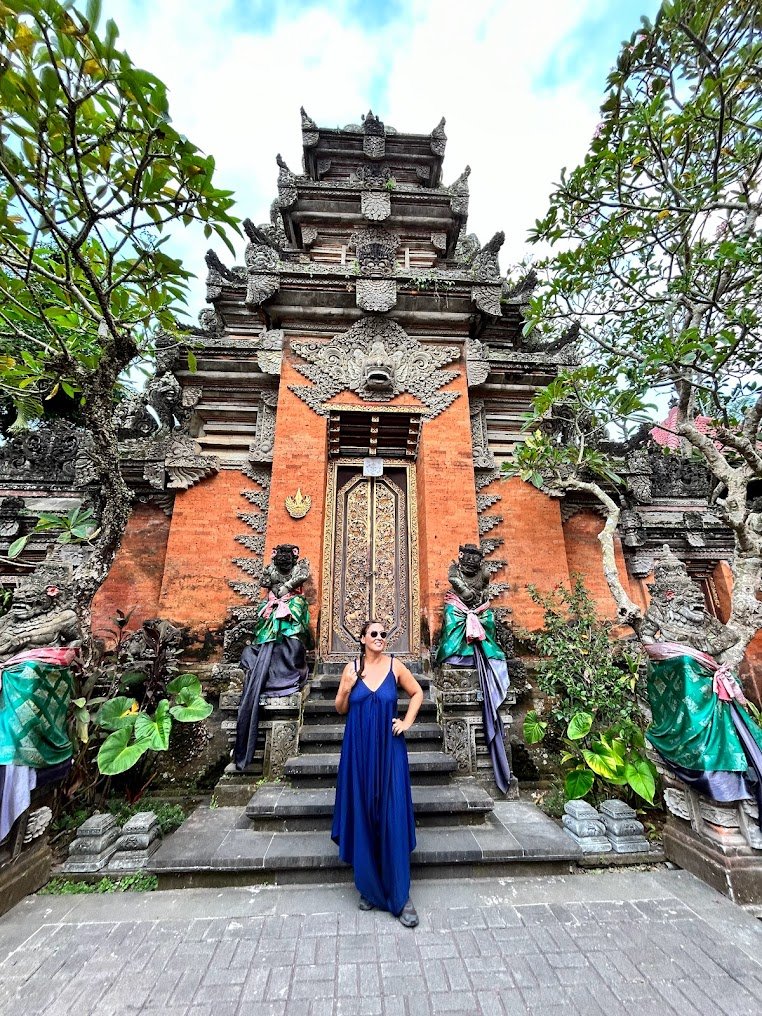
Overall, the architecture of Ubud Palace exemplifies the cultural heritage and artistic finesse of Bali. It stands as a testament to the island’s traditional values, customs, and royal legacy. Visitors to Ubud Palace not only get to witness the exquisite architecture but also experience the deep-rooted spirituality and cultural significance embedded in this historical site.

The history of Ubud Palace, also known as Puri Saren Agung Ubud, dates back to the 1800s during the reign of Tjokorda Putu Kandel, a royal ruler of Ubud. The palace has served as the official residence of the royal family of Ubud for generations and holds significant cultural and historical importance in Bali, Indonesia.
The founding of Ubud Palace can be traced to the early 19th century when Tjokorda Putu Kandel, a descendant of the royal family of Gelgel in East Bali, became the ruler of Ubud. He is credited with establishing the palace and expanding the royal family’s influence in the region.
During his reign, Tjokorda Putu Kandel played a vital role in supporting the development of arts, culture, and religion in Ubud. He encouraged the traditional performing arts, dance, and music, which later became an essential part of Balinese culture. The palace became a cultural hub, attracting artists, dancers, and musicians from across the island.
Over the years, the palace underwent several renovations and expansions, transforming it into a grand residence reflecting traditional Balinese architecture and royal aesthetics. The palace complex comprises multiple pavilions and courtyards, each serving specific purposes, such as ceremonial rituals, official functions, and private family quarters.
The cost for experiencing the traditional dance performance at Ubud Palace may vary depending on the type of show and any voluntary donation you choose to offer.

Copyright © 2023 Developed by Baliwebagency.com